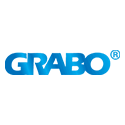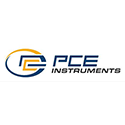-
 ×
×

The Perfect Depth Finder !
Feb 29, 2024
Find the Perfect Depth Finder for Your Boating Adventures!
There's something magical about setting sail on a clear, sunny day, with the wind at your back and the open sea stretching out before you. So, before you gear up for an ocean adventure, you must know that without a depth finder, your adventure would be incomplete.
Because beneath the serene surface of the water lies a potential minefield of hazards. Having a depth finder will give you real-time information about what lies beneath the surface. The depth finder uses sonar technology to measure the depth of the water beneath your boat. So, with a depth finder onboard, you can easily navigate with confidence, avoiding obstacles and hazards.
Moreover, A depth finder is also known as a fish finder, so, if you want to locate the best fishing spots, and underwater structures like reefs and wrecks and even track the movements of fish and other marine life, you can count on this device.
So whether you're planning a leisurely cruise around the bay or a more adventurous voyage across the open ocean, don't leave the shore without a depth finder onboard. It's your ticket to safer, more enjoyable boating experiences, and who knows – it might just help you discover a whole new world beneath the waves.
Here Are Types of Depth Finder
Primarily there are two types of depth finders available: standalone units and combination units.
Standalone Units
These depth finders are designed to operate independently without being connected to other electronic devices on your boat. Standalone units are usually more budget-friendly and are suitable for boaters seeking basic depth-finding functions.
Combination Units
Combination units integrate depth finders with other electronic equipment on your boat, like chart plotters or GPS systems. While they tend to be pricier than standalone units, combination units provide extra features and capabilities, catering to the needs of serious boaters and fishermen.
Factors to Consider While Choosing A Depth Finder
Choosing the ideal depth finder involves weighing several key factors:
1. Transducer Type:
- Transducers, responsible for emitting and receiving sound waves, come in two types: single-frequency and dual-frequency.
- Single-frequency transducers are versatile for most fishing scenarios, while dual-frequency ones offer enhanced detail but at a higher cost.
2. Display Type:
- Displays visually depict underwater terrain and objects. They come in color or black and white.
- Color displays offer superior detail but are pricier than black-and-white options.
3. Screen Size:
- Larger screens facilitate easier reading of underwater data but come with a higher price tag.
4. Power:
- Depth finders with greater power can detect objects and fish at greater depths, albeit at a higher cost.
5. GPS Capability:
- Some depth finders integrate GPS for navigation and marking fishing spots, though this feature often increases the price.
| Technical Considerations | Things To Look | |
| Display | Size and Resolution: Larger screens offer better visibility (e.g., 7-12 inches), higher resolution displays provide sharper images (e.g., 800x480 pixels). | |
| Color vs. Monochrome: Color displays differentiate bottom structure and fish arches, while monochrome may be more readable in direct sunlight. | ||
| Sonar Technology | Traditional Sonar (2D): Shows depth and basic bottom structure, operating at frequencies like 200 kHz, typically affordable. | |
| DownScan/SideScan Imaging (2D with Imaging): Detailed images of bottom structure and fish, utilizing frequencies around 455/800 kHz. | ||
| Chirp Sonar: Superior target clarity and resolution, operating across a range of frequencies (e.g., 50/83/200 kHz), high-end option. | ||
| Transducer | Frequency: Lower frequencies (e.g., 50 kHz) penetrate deeper, higher frequencies (e.g., 200 kHz) offer more detail. | |
| Beam Angle: Narrow angles (e.g., 20 degrees) for precision targeting, wider angles (e.g., 60 degrees) for broader coverage. | ||
| Mounting Option: Transom mount, thru-hull mount, or portable options available, depending on the boat type and use case. | ||
| Additional Features | GPS Integration: Mark waypoints, navigate to fishing spots using built-in GPS receivers. | |
| Fishfinder Features: Alarms for fish detection, adjustable depth ranges, size estimation of targets, etc. | ||
| Networking Capabilities: Connect to chartplotters, trolling motors, or other devices via NMEA 2000 or Ethernet connections. | ||
| Battery Life: Consider battery capacity and power consumption for extended fishing trips, typically ranging from 4 to 20 hours depending on usage. |
At The End
A depth finder is really important for anyone who goes boating or fishing. It helps you stay safe and find fish more easily. When you're picking out a depth finder, think about things like what kind of transducer it has, what the screen looks like, how big it is, how powerful it is, whether it has GPS, and which brand it is. Take your time to look into your options and choose the one that fits what you need for fishing.














.png)

